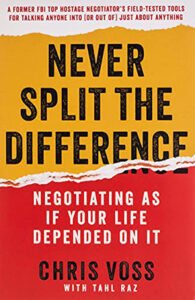|
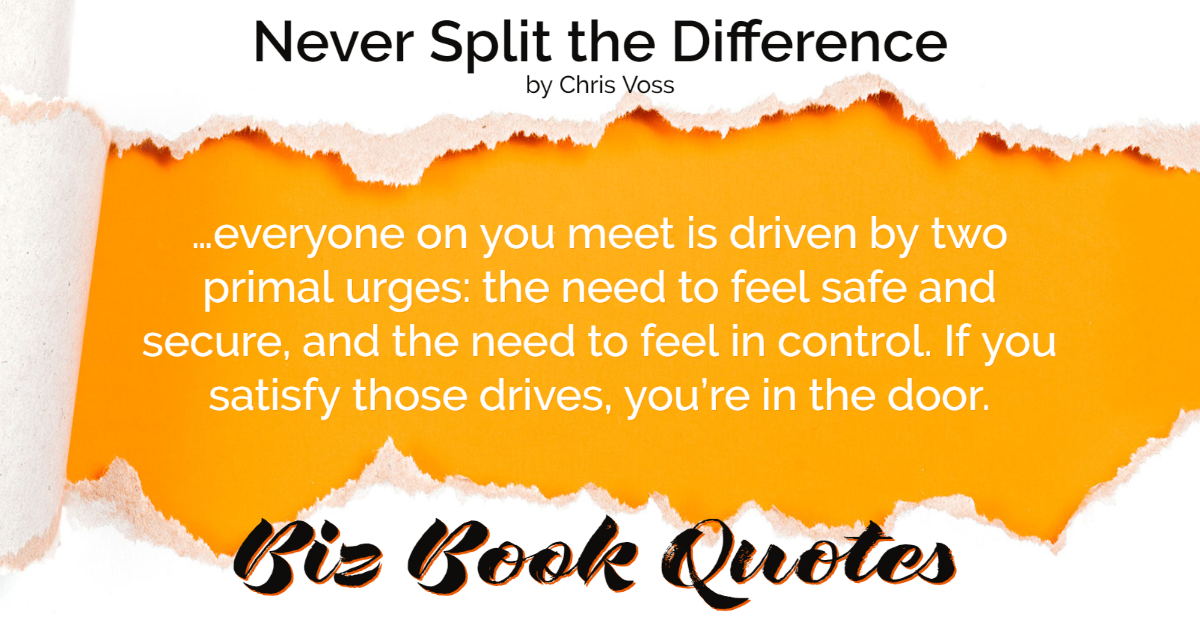
|
Never Split the Difference:
…everyone on you meet is driven by two primal urges: the need to feel safe and secure, and the need to feel in control. If you satisfy those drives, you’re in the door.
|
84 |
|
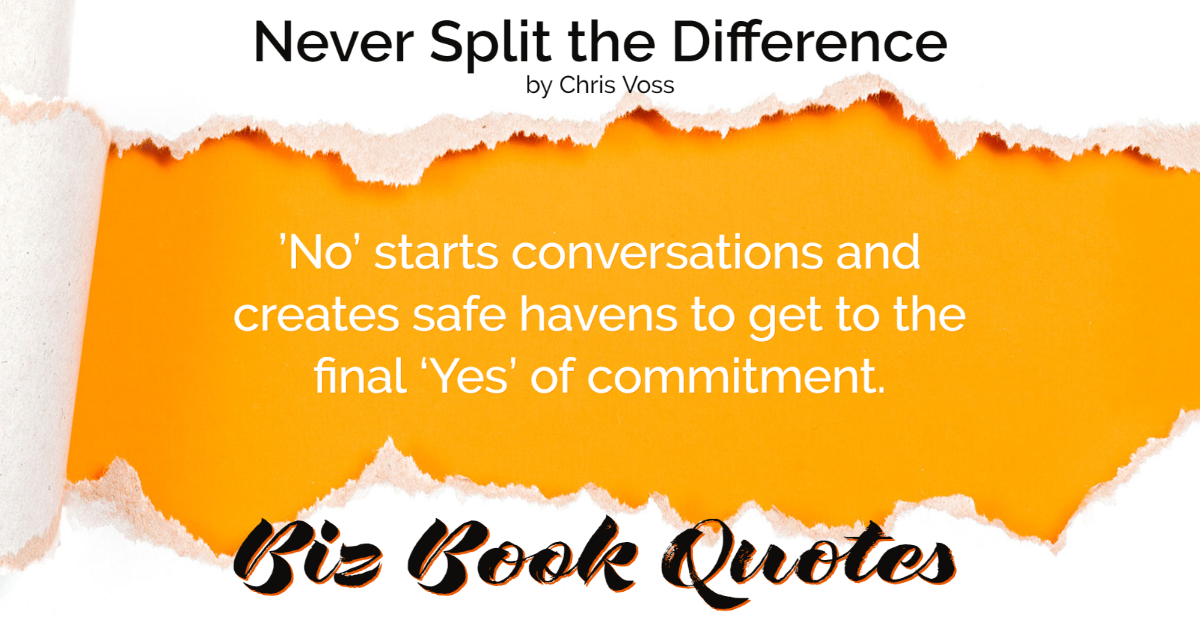
|
Never Split the Difference:
’No’ starts conversations and creates safe havens to get to the final ‘Yes’ of commitment.
|
85 |
|
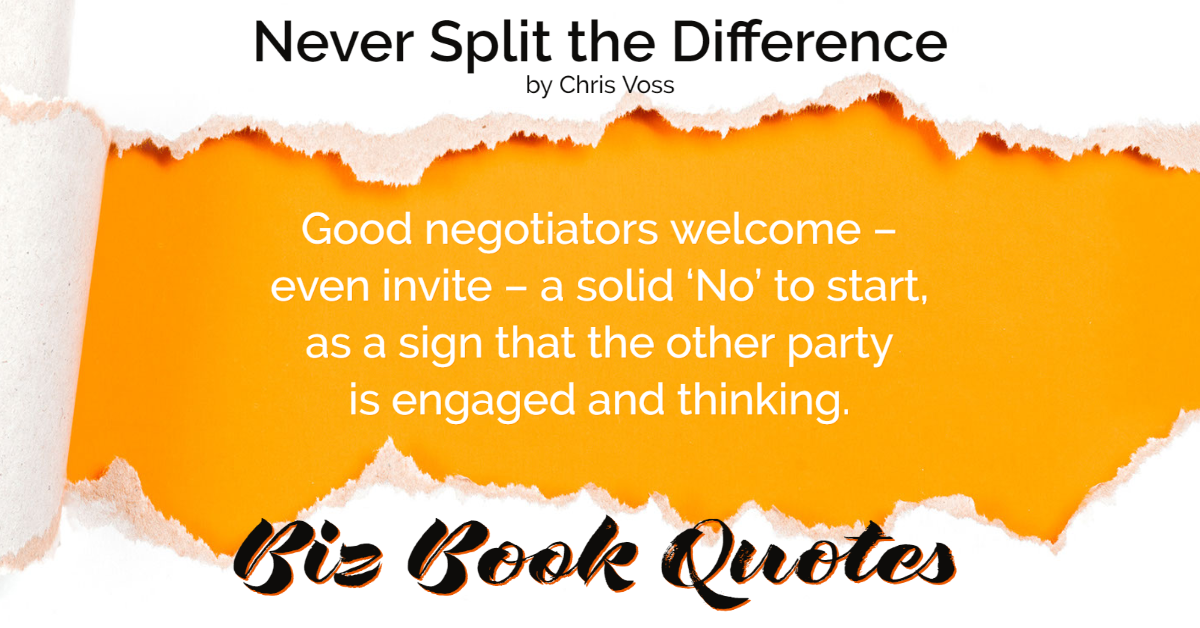
|
Never Split the Difference:
Good negotiators welcome – even invite – a solid ‘No’ to start, as a sign that the other party is engaged and thinking.
|
86 |
|
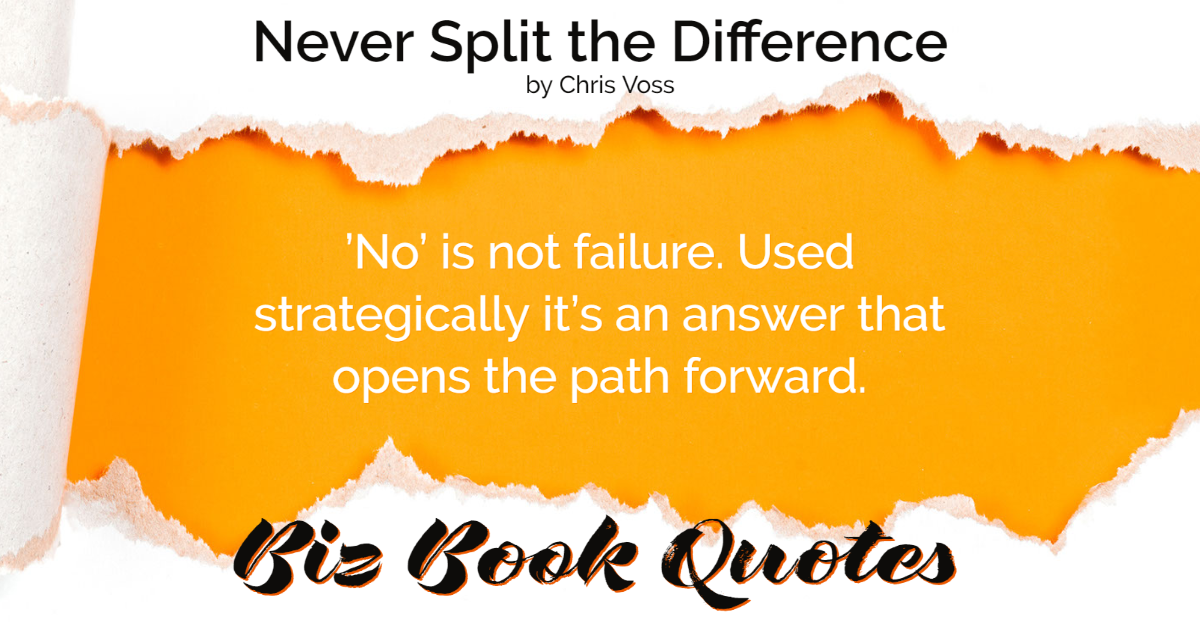
|
Never Split the Difference:
’No’ is not failure. Used strategically it’s an answer that opens the path forward.
|
88 |
|

|
Never Split the Difference:
…if your biggest fear is ‘No,’ you can’t negotiate. You’re the hostage of ‘Yes.’ You’re handcuffed. You’re done.
|
88 |
|
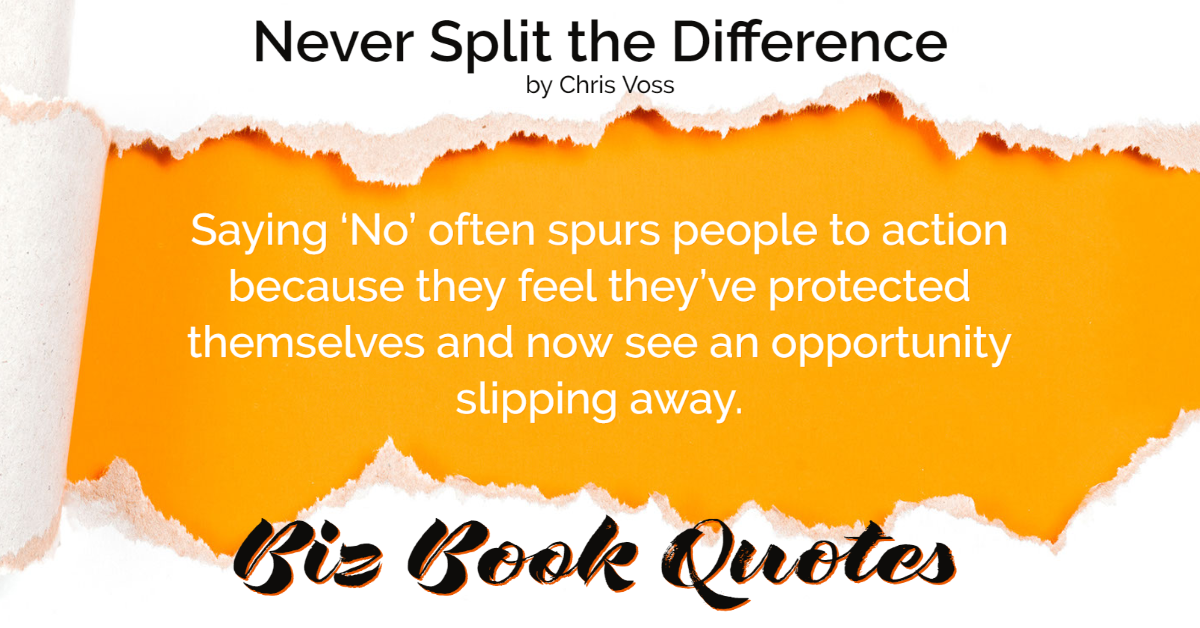
|
Never Split the Difference:
Saying ‘No’ often spurs people to action because they feel they’ve protected themselves and now see an opportunity slipping away.
|
88 |
|

|
Never Split the Difference:
Persuasion is not about how bright or smooth or forceful you are. It’s about the other party convincing themselves that the solution you want is their own idea.
|
94 |
|
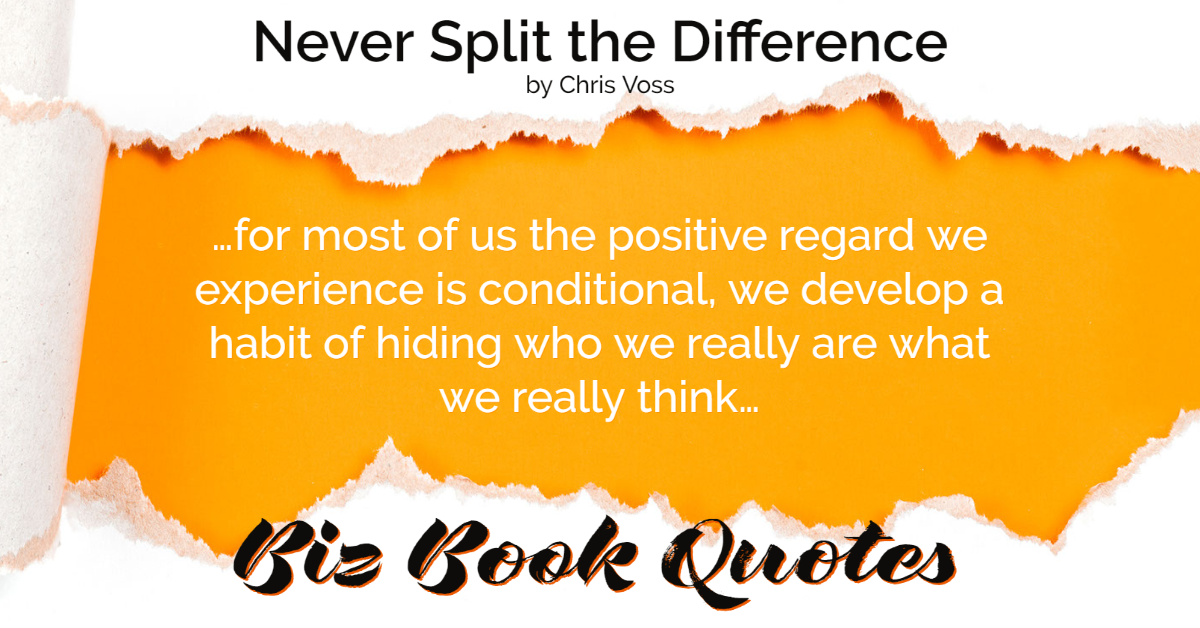
|
Never Split the Difference:
…for most of us the positive regard we experience is conditional, we develop a habit of hiding who we really are what we really think…
|
97 |
|

|
Never Split the Difference:
When your adversaries say, ‘That’s right,’ they feel they have assessed what you’ve said and pronounced it as correct of their own free will. They embrace it.
|
105 |
|

|
Never Split the Difference:
Tell people ‘you’re right’ and they get a happy smile on their face and leave you alone for at least twenty-four hours. But you haven’t agreed to their position.
|
106 |
